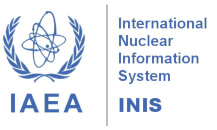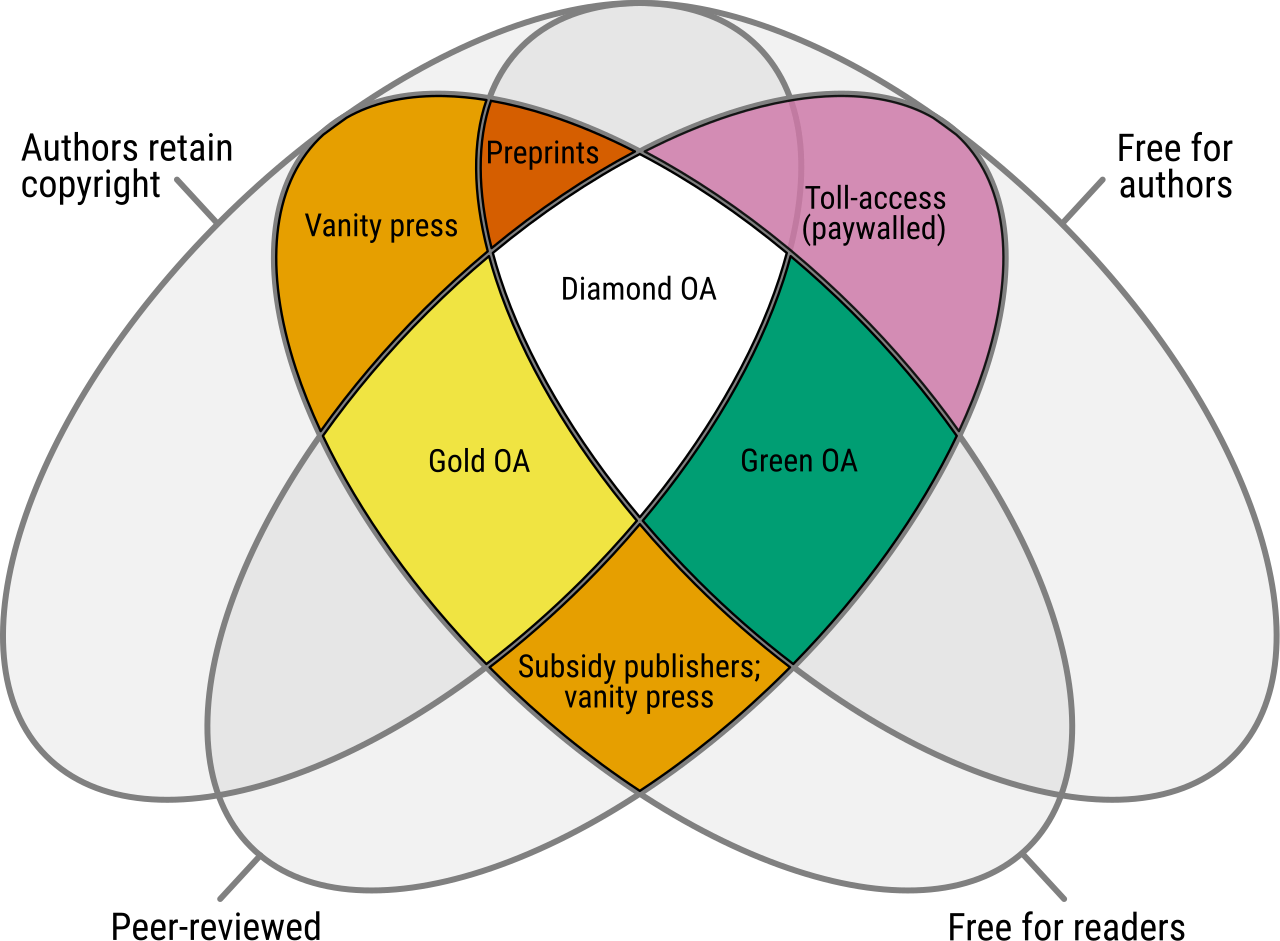Estudo da imagem de materiais impressos em 3D para desenvolvimento de fantomas para radiologia diagnóstica
DOI:
https://doi.org/10.15392/2319-0612.2024.2556Palavras-chave:
Impressão 3D, fantoma, radiologia diagnósticaResumo
As técnicas de impressão 3D têm encontrado aplicações em diversos campos, melhorando significativamente os processos de design e fabricação. O impacto deste crescimento é perceptível na radiologia, onde a impressão 3D tem sido aplicada ao desenvolvimento de ferramentas de controle de qualidade e ao avanço de técnicas de dosimetria. A impressão 3D tem a vantagem de possuir uma grande variedade de materiais plásticos que podem ser utilizados no processo de fabricação. Há escassez de trabalhos desenvolvidos para avaliar a atenuação do feixe de raios X dos materiais utilizados na impressão de modelos 3D para desenvlvimento de fantomas. Este artigo tem como objetivo mostrar nossos resultados na pesquisa das características de imagem de 15 materiais impressos em 3D. Os objetos 3D foram impressos como cubos de 20 x 20 x 20 mm3 com preenchimento de 100%, padrão estrutural retilíneo de 45°/45°. As imagens foram adquiridas em uma unidade de raios X DR e foram analisadas com o software ImageJ. Os valores dos pixels de imagem, a relação sinal-ruído – SNR e a relação contraste-ruído – CNR foram avaliados e comparados entre os cubos impressos em 3D e um simulador de tórax padrão. Ao comparar a relação sinal-ruído para materiais plásticos e estruturas torácicas, foram encontradas diferenças significativas. Resultados semelhantes foram encontrados para o relação contraste-ruído. As diferenças foram notadas por meio do teste de Kruskal Wallis para os materiais plásticos Tungstênio e Bismuto que demonstraram valores estatisticamente significativos de relação sinal-ruído signal-to-noise ratio em comparação ao pulmão (p < 0,0001) e à costela direita (p < 0,0001). descobriu-se que os filamentos de tungstênio e bismuto têm potencial para representar o relação sinal-ruído para estruturas intermediárias e de alta densidade. a escápula foi a única estrutura anatômica sem diferença estatisticamente significativa do relação contraste-ruído em realação ao SILK (p ≥ 0,074), ABS (p ≥ 0,086), PVA (p ≥ 0,917) e ABSpremium (p ≥ 0,955). O estudo demonstrou potenciais materiais de impressão 3D para desenvolvimento de simuladores de radiologia diagnóstica e revelou importantes características de imagem para os materiais plásticos usando a técnica Fused Filament Fabrication.
Downloads
Referências
CRAMER, J.; QUIGLEY, E.; HUTCHINS, T.; , SHAH, L. Educational Material for 3D Visualization of Spine Procedures: Methods for Creation and Dissemination J. Digit. Imaging, v.30, n.3,p.296-300, 2017. DOI: https://doi.org/10.1007/s10278-017-9950-0
KAMOMAE. T.;, SHIMIZU, H.; NAKAYA, T.; OKUDAIRA,K.;AOYAMA, T.; OGUCHI, H.; KOMORI, M.; KAWAMURA, M.; OHTAKARA,K.; MONZEN, H.; ITOH, Y.; NAGANAWA,S.; Three-dimensional printer-generated patient-specific phantom for artificial in vivo dosimetry in radiotherapy quality assurance Phys. Medica, v. 44 , p. 205-211, 2017 DOI: https://doi.org/10.1016/j.ejmp.2017.10.005
SCULPTEO. The State of 3D Printing Report 2018 Disponível em: https://www.sculpteo.com/en/ebooks/state-of-3d-printing-report-2018/. Acesso em: 27 ago. 2024
SHIN, J.; SANDHU, R.. S.; SHIH, G.; Imaging Properties of 3D Printed Materials: Multi-Energy CT of Filament Polymers J. Digit. Imaging, v.30,n.5, p.572–5, 2017 DOI: https://doi.org/10.1007/s10278-017-9954-9
YANG, L.; GROTTKAU, B.; HE, Z.; YE, C. Three dimensional printing technology and materials for treatment of elbow fractures Int. Orthop., v.41,p. 2381–2387, 2017. DOI: https://doi.org/10.1007/s00264-017-3627-7
FAROOQI, K. M.; SAEED, O.; ZAIDI, A.; SANZ, J.; NIELSEN, J. C.; HSU, D. T.; JORDE, U. P. 3D Printing to Guide Ventricular Assist Device Placement in Adults With Congenital Heart Disease and Heart Failure. JACC Hear. v.4,n.4, p.301-11, 2016 DOI: https://doi.org/10.1016/j.jchf.2016.01.012
SAVI, M.; ANDRADE, M. A. B.; POTIENS, M. P. A. Commercial filament testing for use in 3D printed phantoms, Radiat. Phys. Chem., v. 174, p, 108906, 2020 DOI: https://doi.org/10.1016/j.radphyschem.2020.108906
SAVI, M.; ANDRADE, M. A. B.; VILLANI, D., JUNIOR, O. R.; POTIENS, M. D.A. P. A. Development of radiopaque FFF filaments for bone and teeth representation in 3D printed radiological objects, Brazilian J. Radiat. Sci. v.10,n.1,p.01-22,2022. DOI: https://doi.org/10.15392/bjrs.v10i1.1739
KAPETANAKIS, I.; FOUNTOS, G.; MICHAIL, C.; VALAIS, I.; KALYVAS, N.; 3D printing X-Ray Quality Control Phantoms. A Low Contrast Paradigm, Journal of Physics: Conference Series,v.931,p. 012026,2017 DOI: https://doi.org/10.1088/1742-6596/931/1/012026
OLIVEIRA, M.; BARROS, J.C.; UBEDA, C. Development of a 3D printed quality control tool for evaluation of x-ray beam alignment and collimation, Phys. Medica, v. 65, p.29-32, 2019. DOI: https://doi.org/10.1016/j.ejmp.2019.07.026
PAXTON. N.; SMOLAN, W.; BÖCK, T.; MELCHELS, F.; GROLL, J.; JUNGST, T.; Proposal to assess printability of bioinks for extrusion-based bioprinting and evaluation of rheological properties governing bioprintability Biofabrication v.9,n.4,p.044107, 2017 DOI: https://doi.org/10.1088/1758-5090/aa8dd8
OGDEN,K. M.; MORABITO, K. E.; DEPEW, P. K.; 3D printed testing aids for radiographic quality control J. Appl. Clin. Med. Phys. v.20,n.5,p. 127–34,2019 DOI: https://doi.org/10.1002/acm2.12574
NOONOO. J, B.; SOSU, E.; HASFORD, F.; Three-dimensional image quality test phantom for planar X-ray imaging. S. Afr. J. Sci.v.119,n.7/8, p.1-7,2023 DOI: https://doi.org/10.17159/sajs.2023/14269
MADAMESILA, J.; MCGEACHY, P.; VILLARREAL, B.J. E.; KHAN, R. Characterizing 3D printing in the fabrication of variable density phantoms for quality assurance of radiotherapy, Phys. Medica, v.32,n1,p.242-247, 2016 DOI: https://doi.org/10.1016/j.ejmp.2015.09.013
GROENEWALD, A.; GROENEWALD, W. A. Development of a universal medical X-ray imaging phantom prototype J. Appl. Clin. Med. Phys. v.17,n.6,p356-365,2016. DOI: https://doi.org/10.1120/jacmp.v17i6.6356
SCHOPPHOVEN, S.; CAVAEL, P.; BOCK, K.; FIEBICH, M.; MÄDER, U. Breast phantoms for 2D digital mammography with realistic anatomical structures and attenuation characteristics based on clinical images using 3D printing Phys. Med. Biol.v. 64,n.21,p.215005,2019 DOI: https://doi.org/10.1088/1361-6560/ab3f6a
HE, Y.; LIU, Y.; DYER, B. A.; BOONE, J. M.; LIU, S.; CHEN, T.; ZHENG, F.; ZHU, Y.; SUN, Y.; RONG, Y.; QIU, J.;3D-printed breast phantom for multi-purpose and multi-modality imaging Quant. Imaging Med. Surg. v.9,n.1,p.63-74 ,634–74,2019. DOI: https://doi.org/10.21037/qims.2019.01.05
OLIVEIRA, M.; SAVI, M.; ANDRADE, M.; VILLANI, D.; POTIENS, M. P. A.; STUANI, H; UBEDA, C.; MDLETSHE, S.; Attenuation properties of common 3D printed FFF plastics for mammographic applications Brazilian J. Radiat. Sci.,v. 10.n.1,p.01-17,2022 DOI: https://doi.org/10.15392/bjrs.v10i1.1732
LEE, M. Y.; HAN, B.; JENKINS, C.; XING, L.; SUH, T. S.; A depth-sensing technique on 3D-printed compensator for total body irradiation patient measurement and treatment planning Med. Phys. v.43,n.11,p.6137,2016 DOI: https://doi.org/10.1118/1.4964452
JAVAN, R.; BANSAL, M.; TANGESTANIPOOR, A. A prototype hybrid gypsum-based 3-dimensional printed training model for computed tomography-guided spinal pain management J. Comput. Assist. Tomogr.v.40,n.4,p.626-631,2016 DOI: https://doi.org/10.1097/RCT.0000000000000415
KIM, M. J.; LEE, S. R.; LEE, M. Y.; SOHN, J. W.; YUN, H. G.; CHOI, J. Y.; JEON, S. W.; SUH, T. S. Characterization of 3D printing techniques: Toward patient specific quality assurance spine-shaped phantom for stereotactic body radiation therapy PLoS One, v.12,n.5,p.e0176227,2017 DOI: https://doi.org/10.1371/journal.pone.0176227
SILBERSTEIN, J. ; SUN, Z. Advances and Applications of Three-Dimensional-Printed Patient-Specific Chest Phantoms in Radiology: A Systematic Review Appl. Sci. v.. 14, p. 5467 14 5467, 2024 DOI: https://doi.org/10.3390/app14135467
Rasband W. ImageJ. Bethesda, Maryland, USA: U.S. National Institutes of Health; 1997e2012. Disponivél em:: http://imagej.nih.gov/ij/.
HUDA, W.; ABRAHAMS, R. B. Radiographic techniques, contrast, and noise in x-ray imaging. Am. J. Roentgenol. v.204,n.2,p. W126–31,2015 DOI: https://doi.org/10.2214/AJR.14.13116
BRODER, J. Imaging the Chest: The Chest Radiograph. In Diagnostic Imaging for the Emergency Physician, Expert Consult - Online and Print, p.185–296, 2011. DOI: https://doi.org/10.1016/B978-1-4160-6113-7.10005-5
DUKOV, N.; BLIZNAKOVA, K.; OKKALIDIS, N.; TENEVA, T.; ENCHEVA, E.; BLIZNAKOV, Z.; Thermoplastic 3D printing technology using a single filament for producing realistic patient-derived breast models, Phys. Med. Biol. v.67,n.4,p.045008,2022 DOI: https://doi.org/10.1088/1361-6560/ac4c30
GEAR, J. I.; LONG, C.; RUSHFORTH, D.; CHITTENDEN, S. J.; CUMMINGS, C.; FLUX, G. D. Development of patient-specific molecular imaging phantoms using a 3D printer Med. Phys. v. 41,n.8,p.082502,2014. DOI: https://doi.org/10.1118/1.4887854
ZHANG, F.; ZHANG, H.; ZHAO, H.; HE, Z.; SHI, .; HE, Y.; JU, N.;RONG, Y.; QIU, J. Design and fabrication of a personalized anthropomorphic phantom using 3D printing and tissue equivalent materials, Quant. Imaging Med. Surg. v.9,n.1,p.94-100,2019 DOI: https://doi.org/10.21037/qims.2018.08.01
ANWARI, V.; LAI, A.; URSANI, A.; REGO, K.; KARASFI, B.; SAJJA, S.; PAUL, N. 3D printed CT-based abdominal structure mannequin for enabling research. 3D Print. Med.v.6,n.1,p.1-12 ,2020 DOI: https://doi.org/10.1186/s41205-020-0056-9
PULLEN, M. W.; POOLEY, R. A.; KOFLER, J. M.;VALERO-MORENO, F.; RAMOS-FRESNEDO, A.; DOMINGO, R. A.; PEREZ-VEGA, C.; FOX, W. C.; SANDHU, S. J. S. QUINONES-HINOJOSA, A.; BUCHANAN, I. A. A radiographic analysis of common 3D print materials and assessment of their fidelity within vertebral models Ann. 3D Print. Med.v.8,p.1-7,2022 DOI: https://doi.org/10.1016/j.stlm.2022.100080
HUDA, W.; BRAD, A.R. X-ray-based medical imaging and resolution Am. J. Roentgenol. v.204,n.4,p. W393–397,2015 DOI: https://doi.org/10.2214/AJR.14.13126
ZHAO, Y.; MORAN, K.; YEWONDWOSSEN, M.; ALLAN, J. CLARKE, S.; RAJARAMAN, M.; WILKE, D.; JOSEPH, P.; ROBAR, J. L. Clinical applications of 3-dimensional printing in radiation therapy Med. Dosim. v.42,n.2,p. 150–155,2017 DOI: https://doi.org/10.1016/j.meddos.2017.03.001
CEH, J.; YOUD, T.; MASTROVICH, Z.; PETERSON, C.; KHAN, S.; SASSER, T. A.; SANDER, I. M.; DONEY, J.; TURNER, C.; LEEVY, W. M. Bismuth Infusion of ABS Enables Additive Manufacturing of Complex Radiological Phantoms and Shielding Equipment. Sensors (Basel).v. 17,n.3,p.459,2017 DOI: https://doi.org/10.3390/s17030459
JUNG, J.; SONG, S. Y.; YOON, S. M.; KWAK, J.; YOON, K.; CHOI, W.; JEONG, S. Y.; CHOI, E. K.; CHO, B. Verification of accuracy of CyberKnife tumor-tracking radiation therapy using patient-specific lung phantoms Int. J. Radiat. Oncol. Biol. Phys.v. 92,n.4,p.745-753,2015 DOI: https://doi.org/10.1016/j.ijrobp.2015.02.055
PALLOTTA, S.; CALUSI, S.; FOGGI, L.; LISCI, R.; MASI, L.; MARRAZZO, L. TALAMONTI, C.; LIVI, L.; SIMONTACCHI, G.ADAM: A breathing phantom for lung SBRT quality assurance Phys. Medica,v.49,p.147-155,2018 DOI: https://doi.org/10.1016/j.ejmp.2017.07.004
LARSSON, J.; LIAO, P.; LUNDIN, P.; KRITE, S.E., SWARTLING, J.; LEWANDER, X. M.; BOOD, J.; ANDERSSON-ENGELS, S. Development of a 3-dimensional tissue lung phantom of a preterm infant for optical measurements of oxygen—Laser-detector position considerations, J. Biophotonics,v.11,n.3,p.1-8,2017 DOI: https://doi.org/10.1002/jbio.201700097
HAZELAAR, C.; VAN EIJNATTEN. M.; DAHELE, M.; WOLFF, J.; FOROUZANFAR, T.; SLOTMAN, B.; VERBAKEL, W. F. A. R. Using 3D printing techniques to create an anthropomorphic thorax phantom for medical imaging purposes Med. Phys. v.45,n.1,p.92-100,2018. DOI: https://doi.org/10.1002/mp.12644
KAIRN, T.; CROWE, S. B.; MARKWELL, T. Use of 3D printed materials as tissue-equivalent phantoms In: Jaffray, D. (eds) World Congress on Medical Physics and Biomedical Engineering, Toronto, Canada. IFMBE Proceedings,v.51,p.728-729,2015 DOI: https://doi.org/10.1007/978-3-319-19387-8_179
Downloads
Publicado
Edição
Seção
Licença
Direitos autorais (c) 2024 Brazilian Journal of Radiation Sciences

Este trabalho está licenciado sob uma licença Creative Commons Attribution 4.0 International License.
Declaro que o presente artigo é original, não tendo sido submetido à publicação em qualquer outro periódico nacional ou internacional, quer seja em parte ou em sua totalidade. Declaro, ainda, que uma vez publicado na revista Brazilian Journal of Radiation Sciences, editada pela Sociedade Brasileira de Proteção Radiológica, o mesmo jamais será submetido por mim ou por qualquer um dos demais co-autores a qualquer outro periódico. Através deste instrumento, em meu nome e em nome dos demais co-autores, porventura existentes, cedo os direitos autorais do referido artigo à Sociedade Brasileira de Proteção Radiológica, que está autorizada a publicá-lo em meio impresso, digital, ou outro existente, sem retribuição financeira para os autores.
Licença
Os artigos do BJRS são licenciados sob uma Creative Commons Atribuição 4.0 Licença Internacional, que permite o uso, compartilhamento, adaptação, distribuição e reprodução em qualquer meio ou formato, desde que você dê o devido crédito ao (s) autor (es) original (is) e à fonte, forneça um link para a licença Creative Commons, e indique se mudanças foram feitas. As imagens ou outro material de terceiros neste artigo estão incluídos na licença Creative Commons do artigo, a menos que indicado de outra forma em uma linha de crédito para o material. Se o material não estiver incluído no licença Creative Commons do artigo e seu uso pretendido não é permitido por regulamentação legal ou excede o uso permitido, você precisará obter permissão diretamente do detentor dos direitos autorais. Para visualizar uma cópia desta licença, visite http://creativecommons.org/licenses/by/4.0/






















